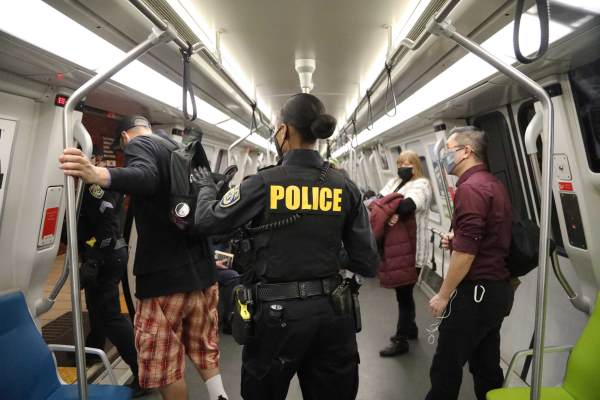BART is moving forward with a purchase of brand-new fare gates to be installed systemwide as part of its latest effort to win riders back and overhaul safety in the system. The new fare gates will bring a new look and improved experience, offering state-of-the-art technology that will boost safety by reducing fare evasion, enhancing access for people in wheelchairs and those who bring bikes and strollers on BART, and optimizing the reliability and maintenance needs of the fare gates.
BART Police will also more than double the presence of officers in trains beginning March 20 to address riders’ safety concerns and quality of life issues during operating hours.
“This is the biggest train deployment we’ve had in the 25 years I’ve been here, if not the history of the BART Police Department,” said BART Police Chief Ed Alvarez. “We’re going to be doubling down on our presence in the system.”
BART police are removing seven traditional vehicle patrols per shift and putting those officers inside trains instead of patrol cars. Also, all officers currently on special assignment, such as the K9 unit, will also shift to train patrols as BART recruits more officers. An additional 8 to 18 officers will patrol trains per shift, joining the ten officers already out in the system dedicated to San Francisco and the core service area of BART.
The redeployment of sworn officers adds to the visible presence provided by BART’s unarmed safety staff including Ambassadors, Crisis Intervention Specialists and Fare Inspectors on trains. BART will suspend the Embarcadero Station focused fare enforcement on weekday mornings to free up the Fare Inspectors and officers used in the enforcement to walk trains elsewhere and all times of the day.
At the March 23, 2023, BART Board of Directors meeting, staff recommended the Board move forward with the first purchase of the $90 million Next Generation Fare Gate project. Staff recommended awarding up to $47 million to STraffic America to implement the project. BART staff will develop an installation timeline with STraffic and will stress-test the new fare gate design at a yet-to-be-determined station later this year. The project calls for all stations to have new fare gates by 2026.
The new fare gates will look unlike any other of the current 700 fare gates in the BART system. While the new design has not yet been finalized, the gates will have clear swing barriers that will be very difficult to be pushed through, jumped over, or maneuvered under.
The next generation fare gates will not have the orange fins riders have become accustomed to. They will also be different than the new swing-style fare gates designed by BART staff and recently installed to enclose elevators into the paid area.
The new gates will be able to handle large crowds without slowing people down as they move in and out of stations while processing their Clipper cards. The gates will have advanced 3D sensors that are able to detect if someone is in a wheelchair or has a bike, stroller, or luggage with them, allowing for more time before the swing barrier closes. The gates will have LED lighting on the swing barriers and the pathway through the gate to help visually impaired riders. STraffic has worked extensively with members of the ADA community and is committed to continue this work while designing the BART gates.
“New fare gates will transform the rider experience and will deliver immediate improvements to safety and reliability,” said BART Board President Janice Li. “BART researched world-wide best practices in fare gate designs to help guide this pivotal purchase. I want to thank the local, state, and federal funding sources who have stepped up to support this impactful project. I am committed to seeing this project fully funded and fully implemented without delay.”
To date, BART has secured $73 million of the $90 million project, with funding from:
- BART Funds (Operating-to-Capital Allocations and Measure RR) $23M
- County Transportation Agency Funds $28M
- Federal Funds $15M
- State Funds $6.5M



